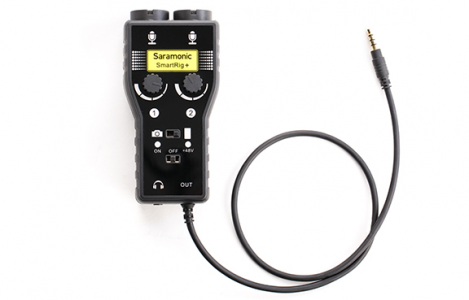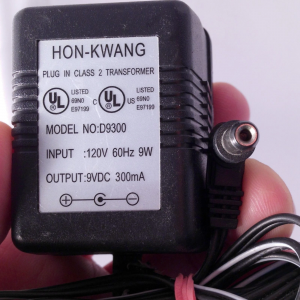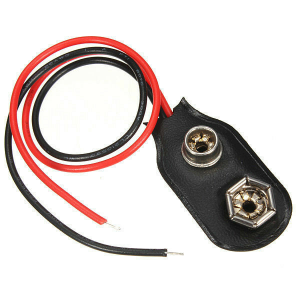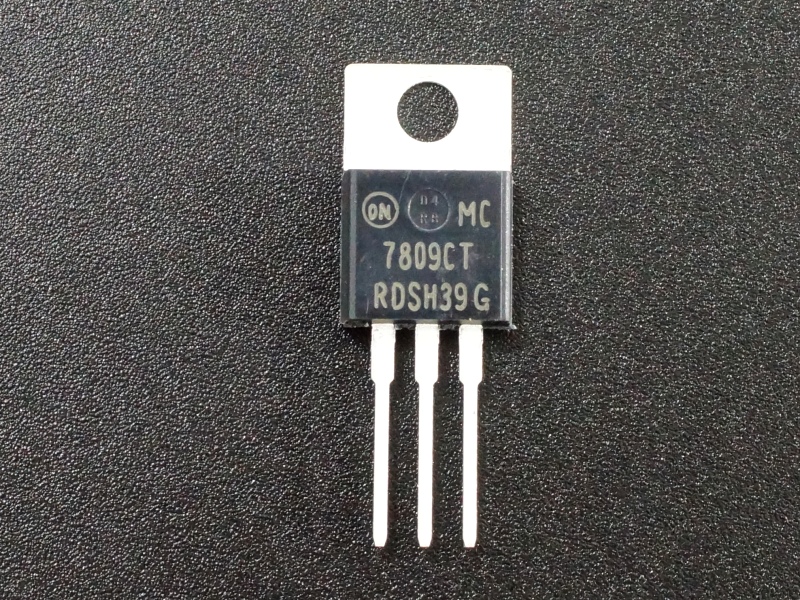- Joined
- Sep 7, 2019
- Messages
- 674
Hey all, I've got a quick question. Electrical stuff is not my expertise so I'm seeking some advice.
I've got a small electrical device that runs off a 9V battery. Specifically it's this thing...

The Saramonic SmartMixer+ is a small mixer device that allows two separate microphones to be input and mixed and sent to a tablet/smartphone for recording.
The thing runs on a single 9V battery and while I haven't actually used it yet, I've heard tell that battery life is around 2 hours of use. I'm gonna test it out myself before I go too far with this idea but I'm planning for the future.
I want to power this thing with an AC wall adapter so that I can eliminate the need for batteries. I've got a thing like this...

A typical AC adapter with output of 9V and 300mA.
I can solder on a connector like this to the wall adapter...

Which I can then use to power the device.
When I plug in the wall adapter it measures 14.7 volts. As far as I know this is normal since there's no load on the transformer. Can I be sure that the 14.7 volts will not damage the device? I'm not sure how the circuits are laid out in the device but isn't it possible that supplying 14.7V into a 9V device can damage it?
Second part. I have also an old Sony Li-ion battery charger from an old digital camera. It has the normal input of 120V AC but the output is rated at 8.36VDC and 600mA. I plugged it in and measured the positive and negative terminals and I actually got 8.36VDC.
Would the battery charger be a better choice for powering this 9V device? I can solder a wire with a 9V connector to the battery charger just like I would with the AC wall adapter. There is a third terminal on the charger that interfaces with a tab on the respective battery for some kind of temperature sensing. The charger seems to output the 8.36VDC even without anything connected to that third terminal. But the temperature sensing feature may somehow be a road block to the use of this charger as a power supply.
Anyone have any thoughts of this?
My last resort is to just get two rechargeable 9V batteries and rotate them. It will save me from buying lots of batteries but there's an inconvenience associated with always checking/swapping batteries.
I've got a small electrical device that runs off a 9V battery. Specifically it's this thing...

The Saramonic SmartMixer+ is a small mixer device that allows two separate microphones to be input and mixed and sent to a tablet/smartphone for recording.
The thing runs on a single 9V battery and while I haven't actually used it yet, I've heard tell that battery life is around 2 hours of use. I'm gonna test it out myself before I go too far with this idea but I'm planning for the future.
I want to power this thing with an AC wall adapter so that I can eliminate the need for batteries. I've got a thing like this...

A typical AC adapter with output of 9V and 300mA.
I can solder on a connector like this to the wall adapter...

Which I can then use to power the device.
When I plug in the wall adapter it measures 14.7 volts. As far as I know this is normal since there's no load on the transformer. Can I be sure that the 14.7 volts will not damage the device? I'm not sure how the circuits are laid out in the device but isn't it possible that supplying 14.7V into a 9V device can damage it?
Second part. I have also an old Sony Li-ion battery charger from an old digital camera. It has the normal input of 120V AC but the output is rated at 8.36VDC and 600mA. I plugged it in and measured the positive and negative terminals and I actually got 8.36VDC.
Would the battery charger be a better choice for powering this 9V device? I can solder a wire with a 9V connector to the battery charger just like I would with the AC wall adapter. There is a third terminal on the charger that interfaces with a tab on the respective battery for some kind of temperature sensing. The charger seems to output the 8.36VDC even without anything connected to that third terminal. But the temperature sensing feature may somehow be a road block to the use of this charger as a power supply.
Anyone have any thoughts of this?
My last resort is to just get two rechargeable 9V batteries and rotate them. It will save me from buying lots of batteries but there's an inconvenience associated with always checking/swapping batteries.


